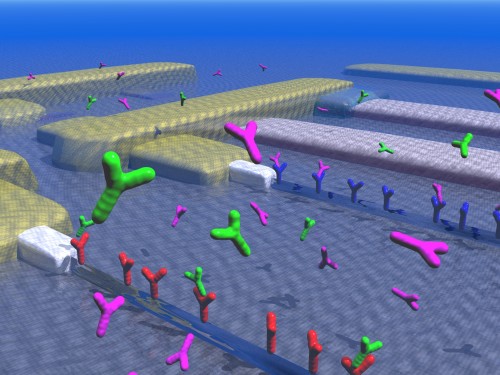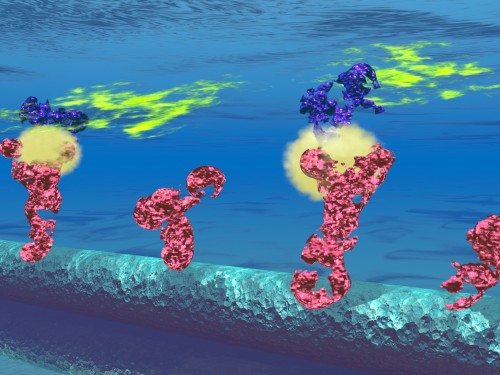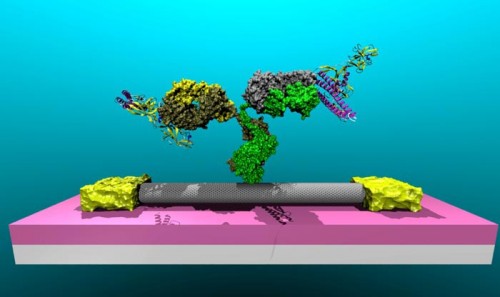
The applications of nanosensors, designed to identify target molecules such as disease markers, have often been limited by the fact that the devices can only be used once. Recently, though, Dr. Mark Reed, Professor of Electrical Engineering at Yale University has led research creating electronic biosensors that can be regenerated and used repeatedly.

Biosensors, geared to detect and measure disease markers ranging from emergent cancer signals to new types of infection, are primarily used on samples of blood and water supply. Biosensors detect particular indicators through the binding of molecules onto receptors that induce a change in electric potential, allowing for rapid and accurate medical diagnoses.

In traditional sensors, no further binding, sensing, or usage is possible after a receptor has been bound. However, Reed’s latest research, published in ACS Nano, introduces biosensors possessing regenerative properties based on a supramolecular approach, in which a layer of receptors on top of a sensor can be ripped off through a “cleaning process” and replaced by additional layers. “[This] ‘Velcro’ layer system allows for increased accuracy and confidence in measurements … since reusable biosensors can be harnessed to run massive multi-parallel experiments with extreme precision,” said Reed.

The development of reusable biosensors promises an expansion in future applications of biosensors, particularly in areas involving continuous monitoring and implantation. With improvements in remote monitoring of toxins and bio-threats, regenerative biosensor technology holds the key to even earlier and more accurate detection, diagnosis, and treatment of diseases.
